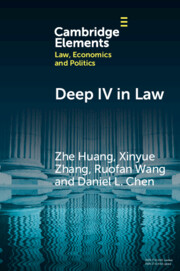Element contents
Deep IV in Law
Published online by Cambridge University Press: 12 August 2022
Summary
- Type
- Element
- Information
- Online ISBN: 9781009296403Publisher: Cambridge University PressPrint publication: 25 August 2022
References
- 3
- Cited by



